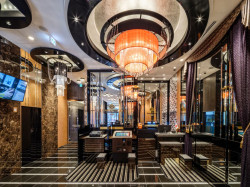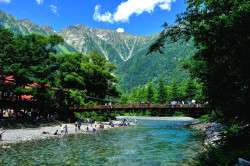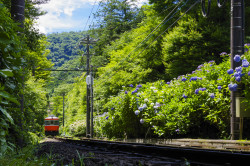
Originally published on metropolis.co.jp on August 2009
 The Sangenjaya Triangle has remained largely untouched for decades. A maze of passageways and blind alleys, it harks back to a period that has been all but erased from Tokyo’s cityscape. The Carrot Tower across the street replaced a similar neighborhood in 1996, and the Triangle’s reckoning with the wrecking ball will surely come eventually. For now, it’s home to Sanchaki, an old-school izakaya located in a wooden house that dates back to the ’50s.
The Sangenjaya Triangle has remained largely untouched for decades. A maze of passageways and blind alleys, it harks back to a period that has been all but erased from Tokyo’s cityscape. The Carrot Tower across the street replaced a similar neighborhood in 1996, and the Triangle’s reckoning with the wrecking ball will surely come eventually. For now, it’s home to Sanchaki, an old-school izakaya located in a wooden house that dates back to the ’50s.
The interior is decked out in the austere plaster that’s common in postwar homes, with a long bar at the entrance. We took a seat in the main room, which has high-backed chairs and heavy wooden tables. There was already a sloshed group of six seated there, all of whom looked like they were probably in their teens when the house was built. They clearly felt they’d earned the right to party, and were threatening to order more when the staff noted the decibel level and offered us quieter seating upstairs.
The second floor spaces vary from a small tatami room to a larger one with padded benches. Weather permitting, you can sit outside on a walled-in terrace and enjoy the evening sky. There’s also a booth at the top of the stairs with curtains for privacy.
With shamisen music playing in the background, we began the evening with a couple mugs of Sapporo Black Label (¥490 for 300ml), while our teetotal guest ordered pineapple juice (¥380). The tsukidashi was a jet-black cup of cold squid-ink noodles (¥300), which sounded better in Japanese (ika-sumi somen) and tasted better than they looked. Reassured, we began a tour of the menu, starting with chilled tofu and a side of salt (¥480), macaroni salad (¥290), naga-imo croquette with tartar sauce (¥630) and Nagoya-style miso tebasaki (¥630). It was a good start; even the tebasaki was tasty, despite being somewhat dry.
By now we had been joined by a roomful of fellow patrons, mostly art-house types in their 20s and early 30s. The air conditioner above us was generating a low, rave-like bassline and sucking cigarette smoke our way. Never mind: we had some shochu—the dry, soba-based Yaezakura, on the rocks (¥480)—and all was forgotten as we tucked into the ebi-mayo salad (¥780) and hotaru-ika okizuke (pickled squid, ¥390).
For the grand finale, we chose the Hoppy-denki (¥580) cocktail, whose impressive jolt comes courtesy of the great Kamiya Bar’s Denki Bran liquor. As the night wore on and nostalgia set in, we ordered the isobe-wake sashimi (hotate ¥680, negitoro ¥700), avocado buttered soy teppanyaki (¥550), and Ryukyu yakisoba (¥680), which came complete with cubes of Spam—something we probably could have done without.
In the end, Sanchaki is a place for the right crowd: friendly, but a little difficult; cool, but not for everyone—which, come to think of it, would be an apt description of Tokyo in any era.







